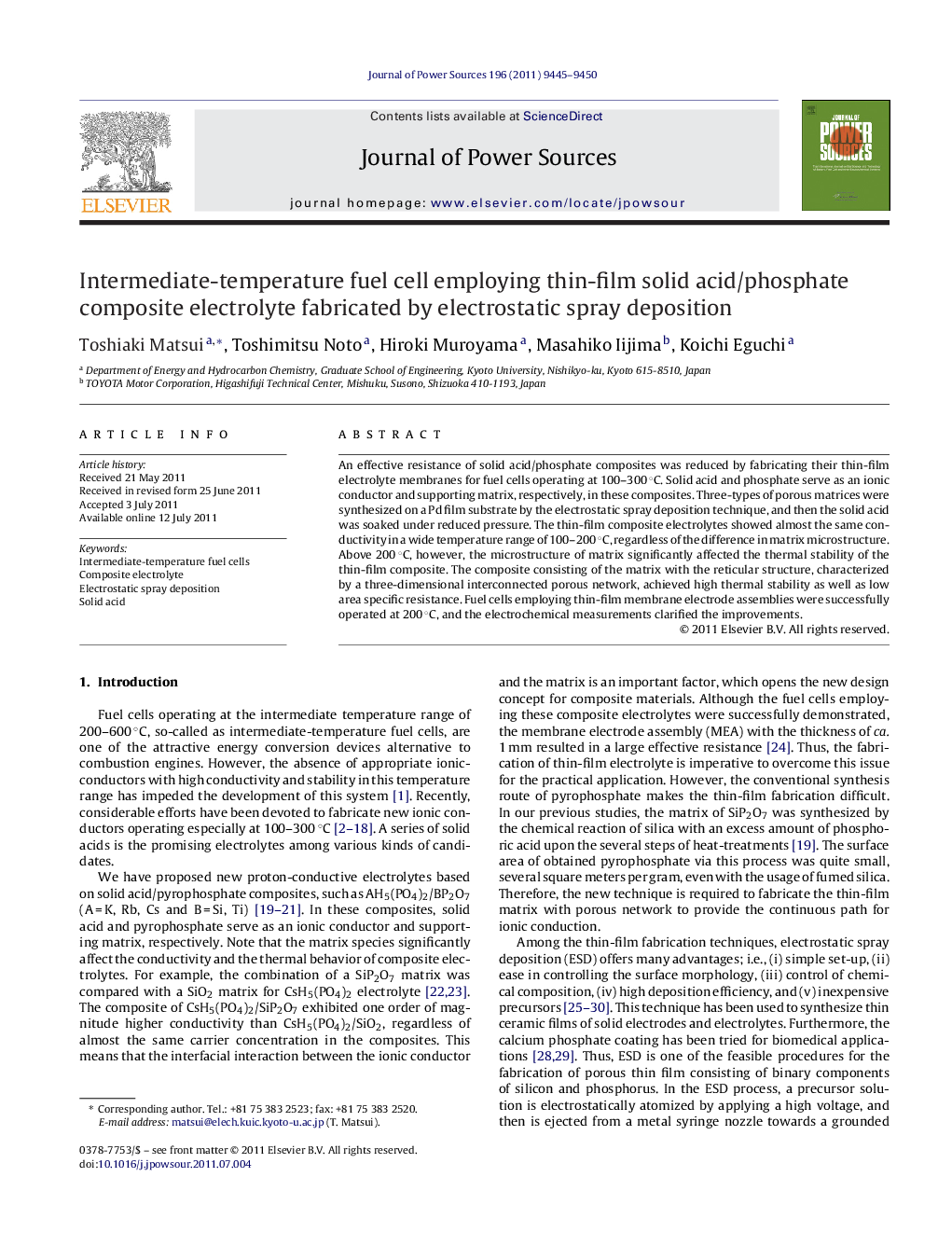| Article ID | Journal | Published Year | Pages | File Type |
|---|---|---|---|---|
| 1284695 | Journal of Power Sources | 2011 | 6 Pages |
An effective resistance of solid acid/phosphate composites was reduced by fabricating their thin-film electrolyte membranes for fuel cells operating at 100–300 °C. Solid acid and phosphate serve as an ionic conductor and supporting matrix, respectively, in these composites. Three-types of porous matrices were synthesized on a Pd film substrate by the electrostatic spray deposition technique, and then the solid acid was soaked under reduced pressure. The thin-film composite electrolytes showed almost the same conductivity in a wide temperature range of 100–200 °C, regardless of the difference in matrix microstructure. Above 200 °C, however, the microstructure of matrix significantly affected the thermal stability of the thin-film composite. The composite consisting of the matrix with the reticular structure, characterized by a three-dimensional interconnected porous network, achieved high thermal stability as well as low area specific resistance. Fuel cells employing thin-film membrane electrode assemblies were successfully operated at 200 °C, and the electrochemical measurements clarified the improvements.
► The porous matrices for the thin-film composite electrolytes were successfully fabricated by the electrostatic spray deposition method. ► The composite electrolyte consisting of the matrix with the reticular structure achieved high thermal stability and low area specific resistance. ► Fuel cells employing thin-film membrane electrode assemblies were successfully operated at 200 °C.
